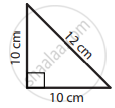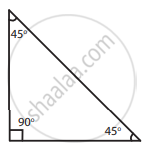Topics
Integers
- Concept for Natural Numbers
- Concept for Whole Numbers
- Negative and Positive Numbers
- Concept of Integers
- Representation of Integers on the Number Line
- Concept for Ordering of Integers
- Addition of Integers
- Subtraction of Integers
- Properties of Addition and Subtraction of Integers
- Multiplication of a Positive and a Negative Integers
- Multiplication of Two Negative Integers
- Product of Three Or More Negative Integers
- Closure Property of Multiplication of Integers
- Commutative Property of Multiplication of Integers
- Multiplication of Integers with Zero
- Multiplicative Identity of Integers
- Associative Property of Multiplication of Integers
- Distributive Property of Multiplication of Integers
- Making Multiplication Easier of Integers
- Division of Integers
- Properties of Division of Integers
Fractions and Decimals
- Concept of Fractions
- Fraction and its Types
- Concept of Proper Fractions
- Improper Fraction and Mixed Fraction
- Concept of Equivalent Fractions
- Like and Unlike Fraction
- Comparing Fractions
- Addition of Fraction
- Subtraction of Fraction
- Multiplication of a Fraction by a Whole Number
- Fraction as an Operator 'Of'
- Multiplication of Fraction
- Division of Fractions
- Concept of Reciprocal or Multiplicative Inverse
- Problems Based on Fraction
- The Decimal Number System
- Comparing Decimal Numbers
- Addition of Decimal Fraction
- Subtraction of Decimal Numbers
- Multiplication of Decimal Fractions
- Multiplication of Decimal Numbers by 10, 100 and 1000
- Division of Decimal Numbers by 10, 100 and 1000
- Division of Decimal Fractions
- Division of a Decimal Number by Another Decimal Number
- Problems Based on Decimal Numbers
Data Handling
Simple Equations
Lines and Angles
- Concept of Points
- Concept of Line
- Concept of Line Segment
- Concept of Angle
- Complementary Angles
- Supplementary Angles
- Concept of Angle
- Concept of Linear Pair
- Concept of Vertically Opposite Angles
- Concept of Intersecting Lines
- Introduction to Parallel Lines
- Pairs of Lines - Transversal
- Pairs of Lines - Angles Made by a Transversal
- Pairs of Lines - Transversal of Parallel Lines
The Triangle and Its Properties
- Concept of Triangles
- Classification of Triangles (On the Basis of Sides, and of Angles)
- Classification of Triangles based on Sides- Equilateral, Isosceles, Scalene
- Classification of Triangles based on Sides- Equilateral, Isosceles, Scalene
- 3. Classification of Triangles based on Angles: Acute-Angled, Right-Angled, Obtuse-Angled
- 3. Classification of Triangles based on Angles: Acute-Angled, Right-Angled, Obtuse-Angled
- Median of a Triangle
- Altitudes of a Triangle
- Exterior Angle of a Triangle and Its Property
- Angle Sum Property of a Triangle
- Some Special Types of Triangles - Equilateral and Isosceles Triangles
- Sum of the Lengths of Two Sides of a Triangle
- Right-angled Triangles and Pythagoras Property
Comparing Quantities
- Concept of Ratio
- Concept of Equivalent Ratios
- Concept of Proportion
- Concept of Unitary Method
- Basic Concept of Percentage
- Conversion between Percentage and Fraction
- Converting Decimals to Percentage
- Conversion between Percentage and Fraction
- Converting Percentages to Decimals
- Estimation in Percentages
- Interpreting Percentages
- Converting Percentages to “How Many”
- Ratios to Percents
- Increase Or Decrease as Percent
- Basic Concepts of Profit and Loss
- Profit or Loss as a Percentage
- Calculation of Interest
Congruence of Triangles
Rational Numbers
- Rational Numbers
- Equivalent Rational Number
- Positive and Negative Rational Numbers
- Rational Numbers on a Number Line
- Rational Numbers in Standard Form
- Comparison of Rational Numbers
- Rational Numbers Between Two Rational Numbers
- Addition of Rational Number
- Subtraction of Rational Number
- Multiplication of Rational Numbers
- Division of Rational Numbers
Perimeter and Area
- Mensuration
- Concept of Perimeter
- Perimeter of a Rectangle
- Perimeter of Squares
- Perimeter of Triangles
- Perimeter of Polygon
- Concept of Area
- Area of Square
- Area of Rectangle
- Triangles as Parts of Rectangles and Square
- Generalising for Other Congruent Parts of Rectangles
- Area of a Parallelogram
- Area of a Triangle
- Circumference of a Circle
- Area of Circle
- Conversion of Units
- Problems based on Perimeter and Area
Algebraic Expressions
- Algebraic Expressions
- Terms, Factors and Coefficients of Expression
- Like and Unlike Terms
- Types of Algebraic Expressions as Monomials, Binomials, Trinomials, and Polynomials
- Addition of Algebraic Expressions
- Subtraction of Algebraic Expressions
- Evaluation of Algebraic Expressions by Substituting a Value for the Variable.
- Use of Variables in Common Rules
Practical Geometry
- Construction of a Line Parallel to a Given Line, Through a Point Not on the Line
- Construction of Triangles
- Constructing a Triangle When the Length of Its Three Sides Are Known (SSS Criterion)
- Constructing a Triangle When the Lengths of Two Sides and the Measure of the Angle Between Them Are Known. (SAS Criterion)
- Constructing a Triangle When the Measures of Two of Its Angles and the Length of the Side Included Between Them is Given. (ASA Criterion)
- Constructing a Right-angled Triangle When the Length of One Leg and Its Hypotenuse Are Given (RHS Criterion)
Exponents and Powers
- Concept of Exponents
- Multiplying Powers with the Same Base
- Dividing Powers with the Same Base
- Taking Power of a Power
- Multiplying Powers with Different Base and Same Exponents
- Dividing Powers with Different Base and Same Exponents
- Numbers with Exponent Zero, One, Negative Exponents
- Miscellaneous Examples Using the Laws of Exponents
- Decimal Number System Using Exponents and Powers
- Crores
Symmetry
Visualizing Solid Shapes
Definition
Right-angled Triangle: A right triangle is a triangle in which one angle has a measurement of 90°.
Definition
Acute Angled Triangle: An acute triangle is defined as a triangle in which all of the angles are less than 90°.
Definition
Obtuse angled Triangle: An obtuse triangle is one that has an angle greater than 90°.
Notes
Right Angled Triangle:
- A right triangle is a triangle in which one angle has a measurement of 90°.
- Right angles are typically denoted by a square drawn at the vertex of the angle that is a right angle.
- The side opposite the right angle of a right triangle is called the hypotenuse. The hypotenuse is the longest side of the right triangle.
- The sides that form the right angle are called legs.
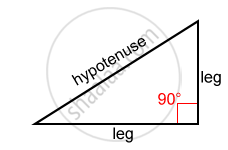
Properties Of Right-angled Triangle:
- A right triangle has a 90 degrees angle. This triangle consists of one right angle and two acute angles.
- The right angle is an angle that measures 90° and the acute angles are those angles that measure less than 90°.
- The orthocenter is the point where all three altitudes of the triangle intersect. The orthocenter of the right-angled triangle is located at c.
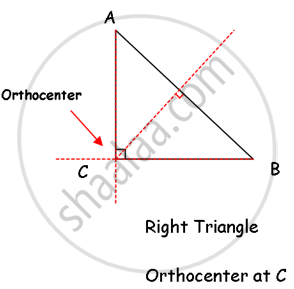
Notes
Acute Angled Triangle:
- An acute triangle is defined as a triangle in which all of the angles are less than 90°. In other words, all of the angles in an acute triangle are acute.

Properties of Acute Triangles:
- All equilateral triangles are acute triangles. An equilateral triangle has three sides of equal length and three equal angles of 60°.
- Acute triangles can be isosceles, equilateral, or scalene.
- The longest side of an acute triangle is opposite the largest angle. The greater the measure of an angle opposite side, the longer the side. Conversely, the longer the side the greater the measure of the opposing angle.
- The orthocenter is the point where all three altitudes of the triangle intersect. The orthocenter for an acute triangle is located inside of the triangle.


Notes
Obtuse angled Triangle:
- An obtuse triangle is one that has an angle greater than 90°. Because all the angles in a triangle add up to 180°, the other two angles have to be acute (less than 90°). It's impossible for a triangle to have more than one obtuse angle.

Properties of obtuse triangles:
- Whenever a triangle is classified as obtuse, one of its interior angles has a measure between 90 and 180 degrees.
- An obtuse triangle has only one angle greater than 90° since the sum of the angles in any triangle is 180°. If one of the angles is greater than 90°, then the sum of the other two angles must be less than 90°, so the other two angles must both be acute angles.
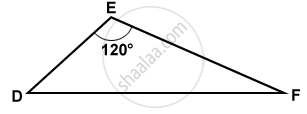
For △DEF above, ∠D + ∠F = 60° < 90°, so ∠D and ∠F are acute angles.
- The side opposite the obtuse angle for an obtuse triangle is the longest side of the triangle. The greater the angle, the longer the side opposite it. Conversely, the longer the side, the greater the angle opposite it.
- An obtuse triangle may be either isosceles (two equal sides and two equal angles) or scalene (no equal sides or angles).
- The orthocenter is the point where all three altitudes of the triangle intersect. The orthocenter of an obtuse triangle is located outside of the triangle.

If you would like to contribute notes or other learning material, please submit them using the button below.
Video Tutorials
Shaalaa.com | Right Angled Triangle
to track your progress
